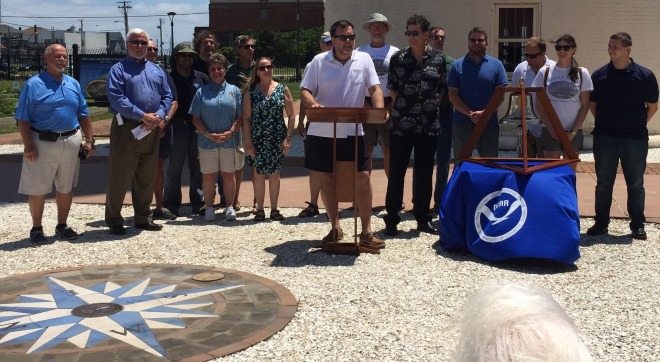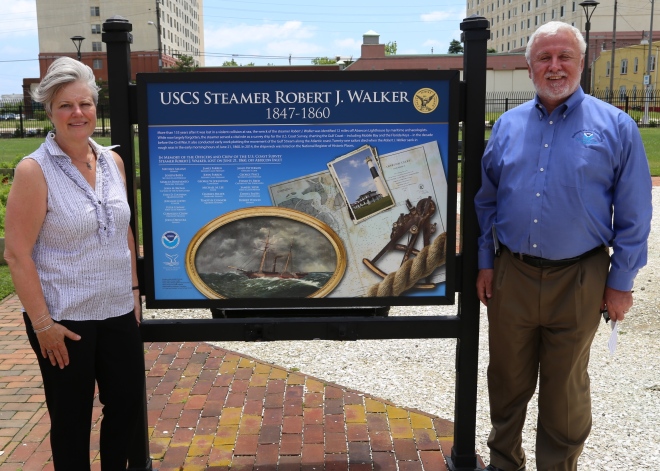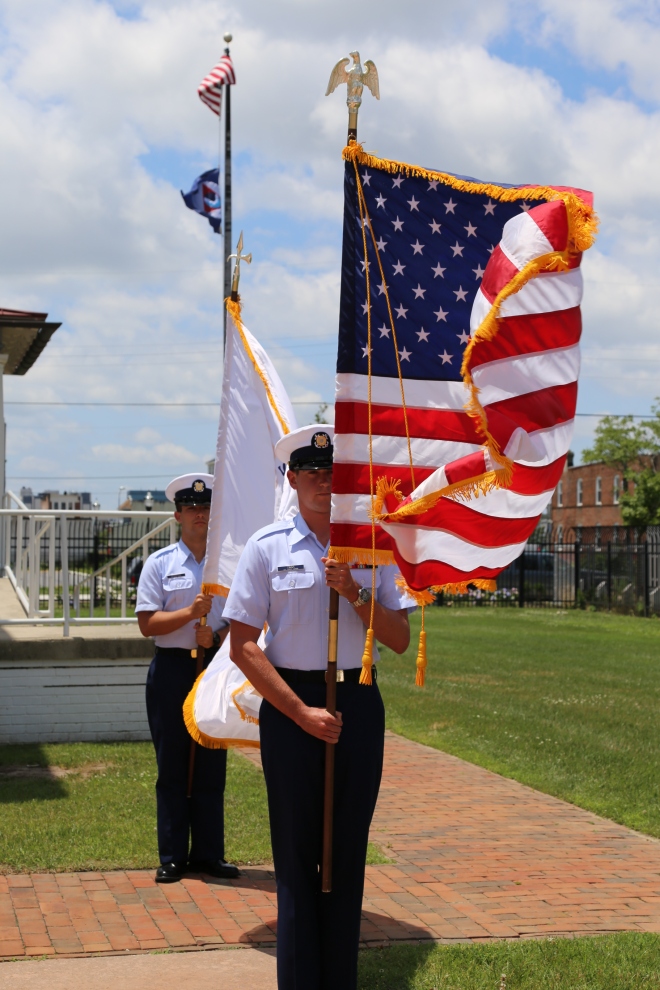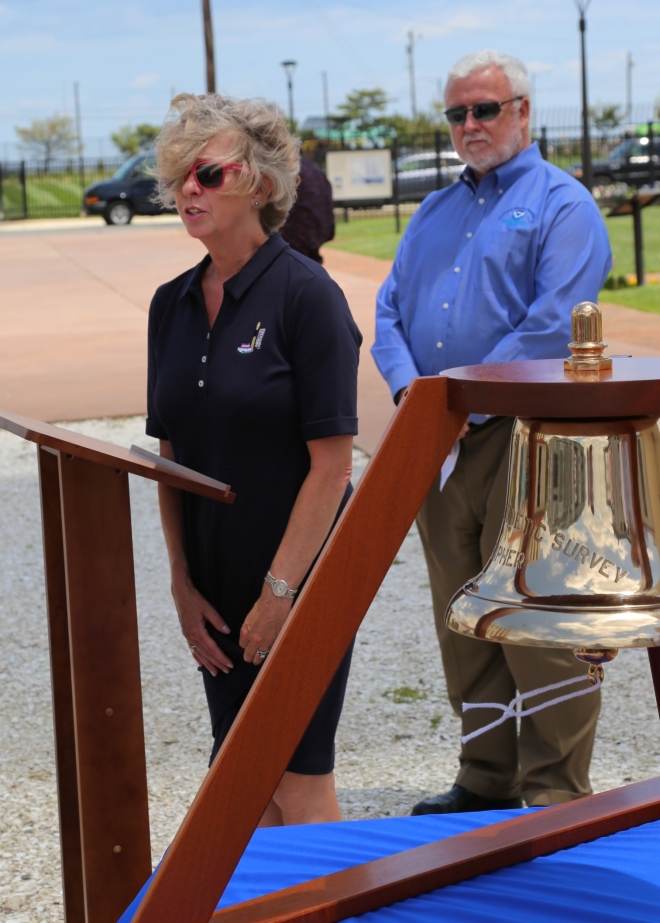Sunday, June 21, was World Hydrography Day, a day set aside to recognize the important work of hydrographers. Measuring and describing the physical features of oceans, seas, and coastal areas is essential not only to the safe navigation of the everyday mariner, but to our nation’s economic development, security and defense, scientific research, and environmental protection.

This year’s observation was particularly noteworthy for NOAA, as we honored the lost crew members of the U.S. Coast Survey Steamer Robert J. Walker, by dedicating a memorial at the Absecon Lighthouse in New Jersey.
On June 21, 1860, the Robert J. Walker was hit by a commercial schooner while transiting from Norfolk to New York after months of surveying in the Gulf of Mexico. The ship sank 12 miles offshore, as they were heading to the Absecon Lighthouse after they were hit. Coast Survey lost twenty crew members that night, and another man died from his injuries the next day, in the largest single loss of life in Coast Survey and NOAA history.
Dr. James Delgado, director of maritime heritage at NOAA’s Office of National Marine Sanctuaries, described the events of that long-ago day, and spoke of the partnership between NOAA and the New Jersey diving community in identifying the previously unidentified wreck.
Steve Nagiewicz, co-director of the Robert J. Walker Mapping Project, recognized a dozen private citizens who assisted with the project, as he talked about the importance of collaborative efforts in conserving the nation’s maritime history.

Rear Admiral Gerd Glang, director of NOAA’s Office of Coast Survey, dedicated the memorial.
“With this memorial duly dedicated, we are assured that future generations will know what happened off these shores,” Glang said. “They will remember the sacrifices made to make our nation’s coasts safe. And they will give these crew members a permanent honor that was so long denied.”
A historic hydrographer’s bell rang for every crew member that lost their life, similar to the memorial service held two years ago.

On the grounds of the Absecon Lighthouse you will now find a memorial consisting of a NOAA commemorative geodetic marker, as well as a plaque honoring the lost crew members, placed in a compass rose on the grounds outside the lighthouse entrance. The plaque is an iconic image that was proposed by NOAA Corps Basic Officer Training Class 102, in a design project headed by Lt. Cmdr. Jeff Shoup.
In expressing NOAA’s appreciation for all involved in the project, Glang thanked two people in particular. First, he noted the persistent efforts of Skip Theberge, our NOAA historian and a retired NOAA commissioned officer.
“I would dare say that very few people in NOAA even knew about the Robert J. Walker until Captain Theberge told us about this tragic event,” Glang said. “It is because of his knowledge — and especially his persistence in telling the story — that NOAA made the effort to find and identify the Walker.”
Glang also offered special appreciation to Cheryl Oliver, exhibit manager for the Office of National Marine Sanctuaries and the senior program advisor for NOAA’s Preserve America Initiative. She is also the president of the U.S. Coast and Geodetic Survey Heritage Society. Cheryl was NOAA’s moving force behind the development of this memorial.

The Robert J. Walker was positively identified in 2013 after NOAA Ship Thomas Jefferson set aside a day to survey the site while it was in the area conducting operations after post tropical storm Sandy. The ship’s physical scientists were guided by historical accounts in the 1860 Coast Survey Annual Report. Then, using the Thomas Jefferson data and armed with additional information from researchers and archaeological advisers, divers pinpointed the exact location and confirmed the ship’s identity.
NOAA would like to express our appreciation to U.S. Coast Guard Station Atlantic City (in particular, Seaman Philip Zinna and Fireman Apprentice Christopher Barreras) for presenting the colors at the event.



News and Updates